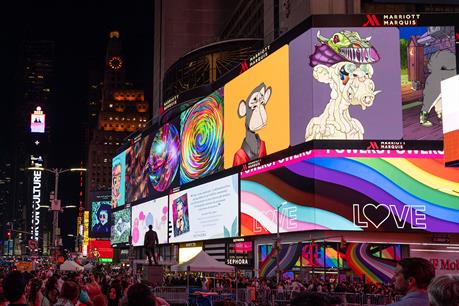By Ewen Cameron, founder and CEO of Berlin Cameron, a VMLY&R company.
If your Twitter feed isn’t overflowing with jokes about the demise of NFTs, then you probably haven’t checked in over the last month.
The NFT market has taken a nosedive in both value and activity. While no one feels sorry for someone with a worthless jpeg, does that mean the space is dead for brands? That the metaverse and Web3 were just bubble ‘shills’ with no long-term purpose or viability?
Absolutely not.
In fact, the significant decline in financial speculation around NFTs and the metaverse, while painful for some, is a net positive for brands. It shifts the focus from the distraction of ‘get rich quick’ thinking to the real value and innovation that blockchain technology brings to marketing.
Let’s consider the potential of blockchain and why it will become fundamental to brands. NFTs by their very definition mean that every token is distinct, delivering uniqueness and scarcity on an unprecedented scale. This utility enables the most broad based brands to de-commoditize. In the Metaverse, my soda or toothpaste can be uniquely mine, delivering the potential of ‘one-to-one’ marketing while creating a collectability only previously available to luxury and traditionally ‘rare’ products and brands.
A second powerful property of NFTs is their ability to build community. Just as a rare sneaker enables the owner to uniquely stand out from the crowd, it also acts as a badge of membership to a community of like-minded people. NFTs behave the same way, signifying both individuality and community belonging. This creates unlimited potential for loyalty and rewards for brands. Together with new media such as Discord, the community power of NFTs promises deeper engagement between consumers and brands.
When your jpeg isn’t worth as much as you thought, the next question is, what is it useful for? Utility is the new focus of NFTs. The unique ability of the technology to be secure, transparent and attach to infinite applications — not just cartoons — means that brands can use NFTs as a gateway or ticket to a range of experiences and products. An NFT as a ticket to a brand event ensures authenticity. It cannot be faked or duplicated, and its transparency enables the brand to build a deeper and dynamic relationship with the holder.
Finally, the Metaverse isn’t actually a place at all. It’s a mindset. True, it’s not that much fun to wander a digital Lego-land or to feel motion sick while wearing VR glasses. But that isn’t the way to think about the metaverse if you are a brand marketer.
The Metaverse is a state of mind where your digital identity is whatever you imagine it to be. It is not constrained by the limits of the physical world or a specific platform. My imaginative version of myself is more spectacular, talented and better dressed than the IRL me. What brand would not want to help me realize that to my full potential? Brands can enable me in ways that I will repay with loyalty — and maybe even some of my devalued crypto.
The metaverse and NFTs, which enable us to own our experiences and data in new horizons, is not a bubble, just like the internet or web2 was not a bubble destroyed by the dotcom bust of the early 2000s. These innovations are so important because they enable humans to expand their world, their sense of self and to do so in connection to others.
Isn’t that, after all, the fundamental value of brands?
Let’s get to work and help shape the metaverse into a place where brands provide utility and value, rather than worrying about the trading value of a jpeg.
This article first appeared on Campaign UK










